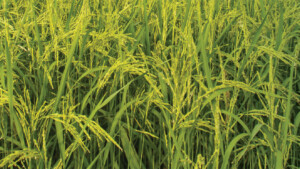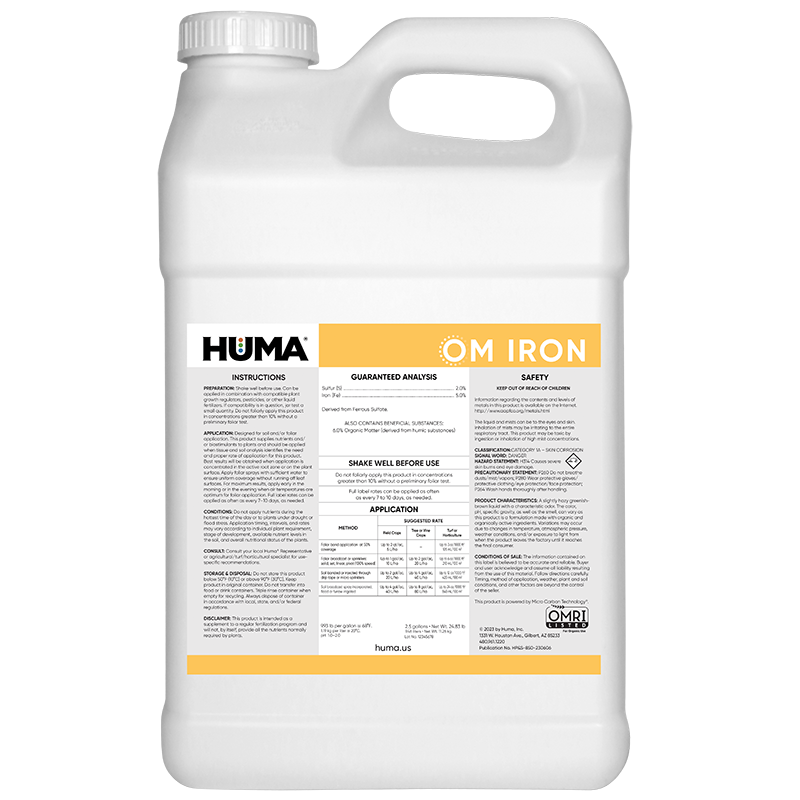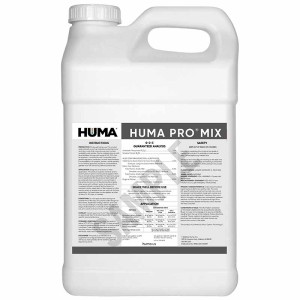OM Iron
Benefits of Use:
- Relieves chlorotic symptoms of iron-deficient plants
- Provides quick crop response and can be applied just prior to actual crop need
- Can be applied foliarly (according to label directions) without risk of phytotoxicity
- Can be effectively tank-mixed with other organic crop inputs
- Resists tie-up in the soil and remains available through the plant root system
- Iron is required by plants for the formation of chlorophyll
- Iron is a component of enzymes that activate other biochemical processes within plants such as respiration, symbiotic nitrogen fixation, and energy transfer
FAQs
Related Products
Related Case Studies

Huma® X-Tend® Compared with Agrotain® on Rice Production in Southern Missouri
Introduction Nitrogen loss through volatilization begins to occur immediately after application unless the urea is stabilized. Agrotain® has been the industry standard for urea stabilization. In 2011, at Shoffner Farm Research, a trial was established to compare Agrotain® and the Huma® product X-Tend® to increase nitrogen use efficiency and rice yield (using the CL 151...

Huma® Nutrient and Fumigation Replacement Program Increases Strawberry Yields
Objective This field trial assessed the effects on strawberry yields of replacing field fumigation with periodic applications of Huma® Promax® and Zap® and replacing a grower’s standard fertilizer program with irrigation-applied Ultra-Precision™ blended liquid Huma® crop nutrition products. Materials & Methods This trial was conducted in Arroyo Grande, Calif., using Portola strawberries planted in 40’...

Huma® Program Increases Soybean Yields 21%, With an ROI of 389%
Objective This field trial assessed the effects of 2 foliar applications of 2 combinations of Huma® products versus a control during the growing season on the yield of soybeans (Glycine max, variety AG48X7) when compared with the grower’s standard crop nutrition program. Materials & Methods This trial was set up in a complete randomized-block design...
Related Blog Posts

This Week in Ag #5
It’s Commodity Classic week. This is one of the ag industry’s most important shows, and among my favorite times of the year. I’ll be in Orlando for the show, as will Lyndon Smith, Barrett Smith and Michael Gardner. #Classic23 is expected to draw around 5,000 farmers. But what makes this show exceptional is not the number...

This Week in Ag #59
“It won’t grow in the bag.” Grandpa never minced words. And that’s how he responded (in frustration) to my dad and uncle whenever they pondered dropping the planter. His philosophy was simple: the moment you can plant, you plant. There’s only so much heat and sunlight Mother Nature offers, so you better take her up on...

Earth Day: “It’s Getting Better All the Time”
Celebrating Earth Day every April 22 is a great time to pause and reflect: How are we, today, treating the environment and the plants, animals, and people who live in it? What have we accomplished in the past year that makes our planet a better, more sustainable place to live and raise our families? What are our goals for future improvement?









